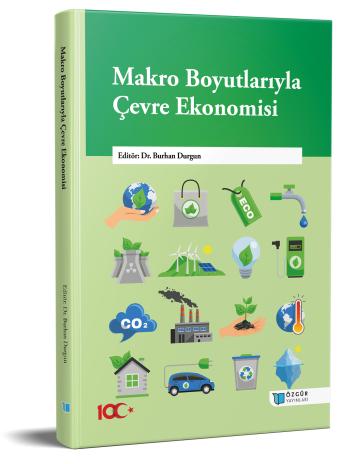
CO2 Emisyonunu Etkileyen Göstergeler: Gelişmiş ve Gelişmekte Olan Ülkeler Analizi
Şu kitabın bölümü:
Durgun,
B.
(ed.)
2023.
Makro Boyutlarıyla Çevre Ekonomisi.
Özet
Sürdürülebilir bir kalkınma stratejisi oluşturulurken, ekonomik büyüme ve çevre koruma arasındaki denge kritik bir öneme sahiptir. Bu dengenin sağlana bilmesi için çevre ve ekonomik kalkınma ilişkisinin yön ve şeklinin belirlenmesi gerekmektedir. Çevresel faktörler ekonomik, sosyal ve demografik göstergelerin bir yan etkisi olarak oluştuğu gibi bu göstergeleri de etkilemektedir. Özellikle son dönemlerde ortaya çıkan çevre kirliliği ve iklim değişikliğinin ekonomik, finansal, sosyal, demografik etkilerinin bireysel, kurumsal ve toplumsal sonuçları izlenmeden kaliteli gelişme ve kalkınma sürecinin tasarlanması mümkün gözükmemektedir. Bu bağlamda çevresel faktörleri etkileme ve etkilenme şeklinin belirlenmesi oluşturulacak politika kararları açısından yol gösterici bir niteliğe sahip olacaktır. Çalışmada, çevre kirliliğini etkileyen faktörlerin gelişmiş ve gelişmekte olan ülkeler bağlamında incelenmesi amaçlanmıştır. Çevre kirliliği göstergesi olarak literatürde sıklıkla ele alınan CO2 emisyonu kullanılmıştır. Çalışmada 2009-2020 dönemi için seçilmiş gelişmiş ve gelişmekte olan 62 ülkenin verileri kullanılarak CO2 emisyonunu etkileyen göstergeler dinamik panel veri analizi yöntemi ile irdelenmiştir. Çalışmada kişi başına milli gelir, enerji yoğunluğu, yüksek teknoloji ihracatı ve nüfus göstergeleri ele alınırken ayrıca çalışmada küresel ekonomik faaliyetlerin sekteye uğradığı COVID-19 dönemi kukla değişken olarak modele dahil edilmiş ve dönemin CO2 emisyonuna etkisi incelenmiştir. Çalışmada, gelişmiş ve gelişmekte olan ülkeler açısından CO2 emisyonunun göstergelerden etkilenme yönünün farklılaştığı belirlenmiştir.

